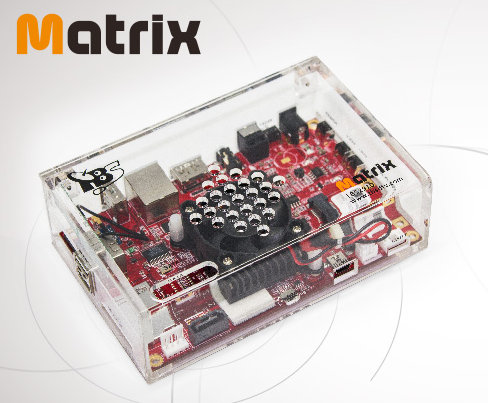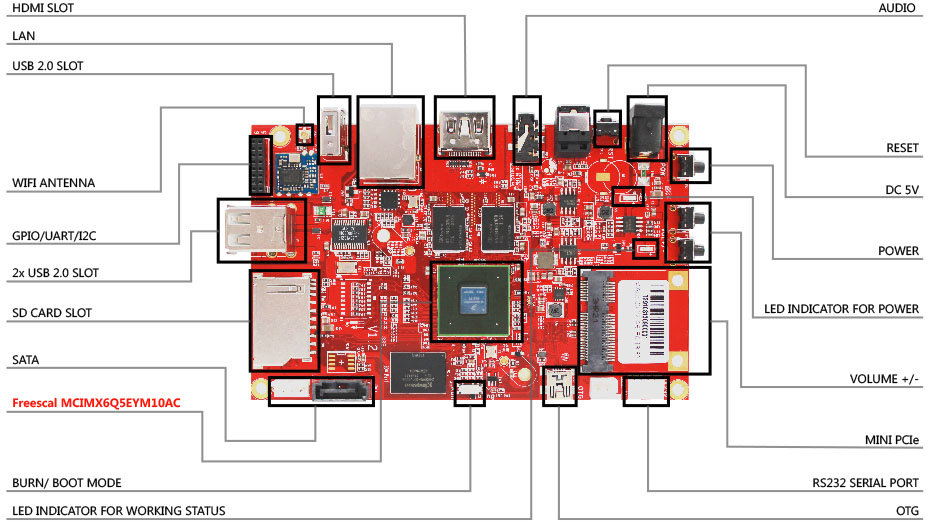Posts: 80
Joined: Nov 2009
Reputation:
0
@wolfgar: an news on your CuBox-i board?
i would like to order one if you found the bug preventing proper 1080p.
cheers
Posts: 256
Joined: Nov 2012
Reputation:
4
wolfgar
Retired Team-Kodi Member
Posts: 256
Hi,
Sorry for my late answer : Yes cubox-i is now basically ok even for 1080p.
Stephan
Posts: 80
Joined: Nov 2009
Reputation:
0
Thank you for the answer but ... - "basically ok" does mean?
Will it do DTS-HD/ DD etc. /downmixing / 24p /30p / 3D ? Could you give me a hint what we can exspect ?
If you need additional hardware just tell me and i will buy one for you. If you need anything else please send me a pm.
Posts: 228
Joined: May 2012
Reputation:
0
pszab
Senior Member
Posts: 228
All of the versions are the same for htpc?
Posts: 256
Joined: Nov 2012
Reputation:
4
wolfgar
Retired Team-Kodi Member
Posts: 256
2013-12-09, 22:34
(This post was last modified: 2013-12-09, 22:56 by wolfgar.)
Hi mbosner
By "basically ok", I mean that even for the carrier one I own and which is equipped with a imx6 solo, last changes enable to have a fluent experience @1080p.
The issue was DDR bandwidth and the overall solution requires a little DDR overclock to have better margins.
I have not been able to test all configurations you speak about :
bitstream (SPDIF and HDMI) is OK,
decoding (including downmixing) non HD audio work for sure.
24p is also ok for sure. 30p I don't know.
For HD audio, at hardware level, it should be ok but I never had a success report about it. I had at least one report which states it is KO : As the logs stated an underrun I am unsure the issue was really about audio. (It could be a bandwidth issue)
I am unable to test by myself this function (no HDMI amp)
For 3D, it should be doable (at hw level the HDMI is v1.4a) but I simply have never tested it nor checked if every piece of software are available so far. (again no hw)
At least I fear the imx6 solo may have bandwidth issues as we have to decode 2 1080p streams for 3D...
I am sorry for my generic answer.
Obviously I should try to formally gather results from users to be able to communicate more precise data about the current state of implementation...
Best regards
Stephan
Hi Pszab
All versions are not the same. especially DDR bandwidth and GPU are different.
If you care only about XBMC, the solo may be enough...
I hope users will be able to perform video to illustrate how it behaves and that some sort of benchs regarding how scrappers behave etc will be realized to give you a better idea of the differences between solo/dual lite/dual ultra/quad models
For now I don't have formal figures : solo is not so bad but to be honest I spend most of my time on quad models...
Stephan
Posts: 256
Joined: Nov 2012
Reputation:
4
wolfgar
Retired Team-Kodi Member
Posts: 256
2013-12-09, 22:50
(This post was last modified: 2013-12-09, 22:52 by wolfgar.)
Hi Hedda,
I am sorry for the confusion.
udoo team uses this "official" adjective in contrast with a previous image which was based upon my work but provided by a beta tester (Luca)
I guess they just wanted to underline that now, I have my own board and support by myself their appealing platform...
On my siide, I use the adverd as a way to ta say my udoo image is now public (a preview has been shared for 2 weeks privatly) : I will modify my post with "publicly" if you prefer...
Regarding mainlining, I still have some work before attempting to do this but it is very clearly my intend : I hope to be able to solve 3 or 4 annoying remaining bugs (some kind of memory leak + issue with 4:3 aspect ratio in liveTV + a specific AVC video stream improperly decoded + issue when switching channels in livetv) and to refactor a little the code by the end of the month. And then I will try to push my code ...
Best regards
Stephan
Posts: 1
Joined: Dec 2013
Reputation:
0
I have tried the latest XMBC image for Udoo Quad, rather impressive for a new board.
I have the Quad board with SATA. Playing videos over SMB seems to constantly buffer, however on NFS its better. By default before changing any settings, the video would play at 2x or 3x normal speed. I enabled vsync, and set audio to static 48khz, rebooted and it plays. However the biggest issue is it freezes after playing video. Within 10 minutes normally, nothing gets spit out the serial console beforehand. Oh and even with vsync, the fps reported in xbmc is around 100~150fps, I was under the impression this should be capped at 60fps running 1920x1200-60 over HDMI with vsync ON.
Oh and the temperature reported by xbmc seems to come up to about 120f, and never moves once its there.
Thanks for amazing work for the iMX6 processor support.
-Chris
Posts: 256
Joined: Nov 2012
Reputation:
4
wolfgar
Retired Team-Kodi Member
Posts: 256
Hi,
Regarding this new matrix device, I have been in touch with TBS and I have just received the TBS-2910.
So you can expect a formal feedback regarding this promising device and the tuners TBS5880 and TBS5980 from my side.
Unfortunately,
- For now, software support is not provided : Nothing can be downloaded from the link you provide.
- The fan is really not a good choice in my opinion (I can already tell it is especially loud). All other imx6Q boards I am aware of are able to be passively cooled and it is just fine that way : To me, it is even a must have for a perfect media center device...
But no quick conclusions, I will provide a complete review when the software will be published...
Best regards
Stephan
Posts: 94
Joined: Jul 2012
Reputation:
0
I plan to try to get XBMC working on the Sabrelite (imx6 quad board) in the holiday season, and also strap over so CEC is working. But what root filesystem would you recommend to start with, and which of your github kernel branches..?


